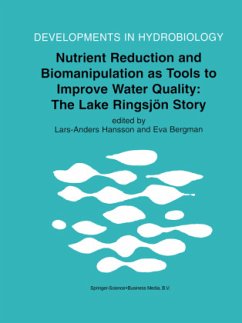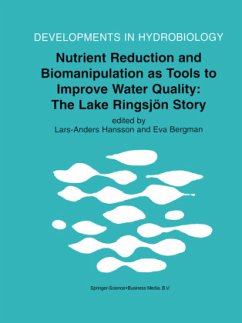
The Ecological Bases for Lake and Reservoir Management
Proceedings of the Ecological Bases for Management of Lakes and Reservoirs Symposium, held 19-22 March 1996, Leicester, United Kingdom
Herausgegeben: Harper, David M.; Brierley, Bill; Ferguson, Alastair J. D.; Phillips, Geoff

PAYBACK Punkte
76 °P sammeln!
The Ecological Bases for Lake and Reservoir Management provides a state-of-the-art review of the range of ecologically-based techniques necessary for the holistic management of lakes and their catchments. Most of the methods, case studies and national policies reviewed are directed towards management of the largest problem - eutrophication - with the emphasis on the multiple-scale approach needed for successful management and restoration. Case studies come from the USA and ten European countries, and range from single lakes through to lake districts and national inventories. Several essays pre...
The Ecological Bases for Lake and Reservoir Management provides a state-of-the-art review of the range of ecologically-based techniques necessary for the holistic management of lakes and their catchments. Most of the methods, case studies and national policies reviewed are directed towards management of the largest problem - eutrophication - with the emphasis on the multiple-scale approach needed for successful management and restoration. Case studies come from the USA and ten European countries, and range from single lakes through to lake districts and national inventories. Several essays precede the practical chapters with thought-provoking comments on the political, social and economic climate of water management.












